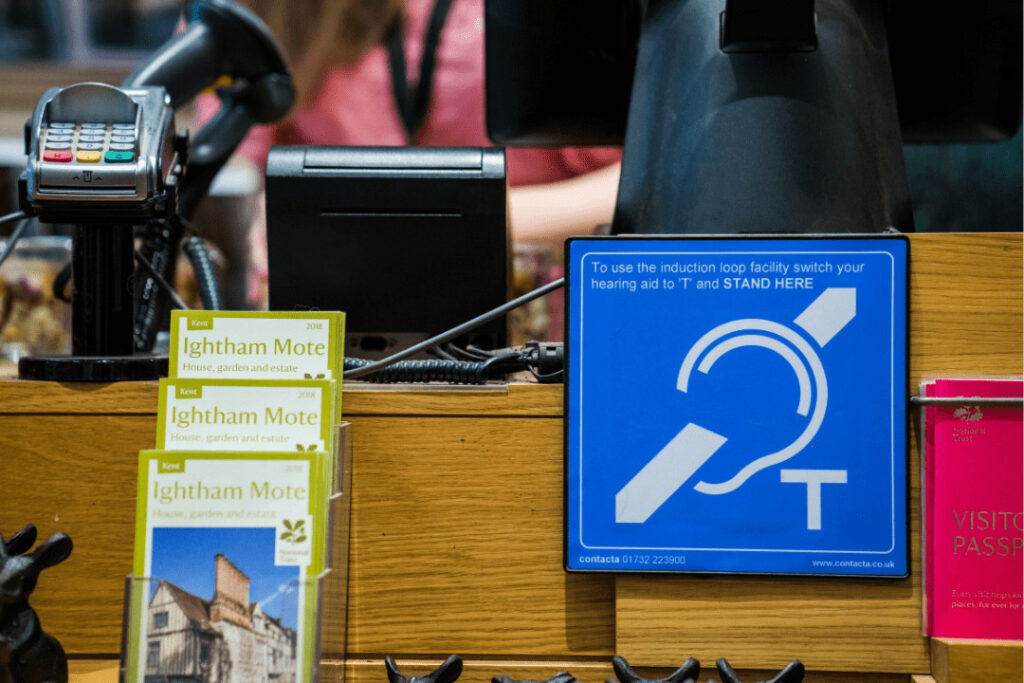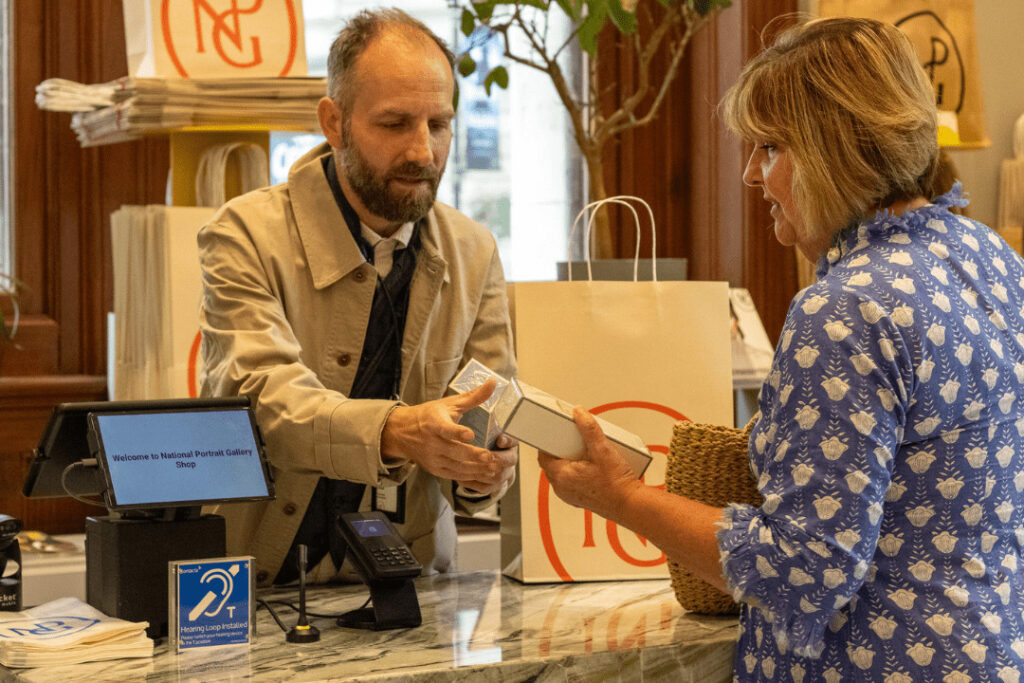
Learn how hearing loops work, the importance of businesses and venues having them, and how RNID can help.
How hearing loops work
A hearing loop is an assistive listening system that helps make public premises welcoming to people with hearing loss.
They transmit audio directly to users’ hearing aids or cochlear implants, cutting out background noise and making speech and music clear. They also ensure that companies or organisations are being compliant with equality legislation.
Where hearing loops can be used
Hearing loops are ideal for improving the accessibility of locations where one-to-one communication occurs, like reception desks, checkouts, ticket windows and customer service points.
‘Large area’ loops offer clear sound for groups of people in venues such as theatres, cinemas, places of worship, community centres, lecture halls and courtrooms.
More about hearing loops
The Equality Act 2010 and Disability Discrimination Act in Northern Ireland protect people who are deaf or have hearing loss from discrimination. It states that service providers cannot discriminate against people by refusing to provide a service or offering a service of a lower standard.
The Department for Communities and Local Government have set out in the ‘The Building Regulations 2010 – access and use of buildings’ that all people should have access to, and the use of, all the facilities provided within buildings.
It states that to obtain the full benefit of situations such as discussions or performances, “a person with hearing loss must receive a signal that is amplified in both volume and signal to noise ratio,” and provision must be made for a permanent system in larger spaces. The document provides information on available technologies and the spaces in which they should be fitted.
The BS8300 is the UK Building Code of Practice revised in 2018. This code of practice is the most detailed and specific document for assistive listening integration and the obligations for service providers and venues.
The BS8300 was compiled by the British Standards Institution (BSI) detailing the required design of buildings for meeting the needs of disabled people and promotes equal access to services and buildings. It contains many examples, including detailed information on how and where assistive listening technologies should be integrated in the built environment.
Our partner, Contacta, will get your hearing loop up and running again in no time.
Email [email protected] to arrange a service call.
We recommend you maintain your hearing loop every 12 months. Our installation partner Contacta offers annual maintenance and service call schemes to keep it in good working order.
Email [email protected] for details.
Expert advice for your venue

If you’re an operations manager or business owner considering installing a new assistive listening system, or if your current system needs attention, our expert partners can help.
RNID helps organisations and businesses install hearing loops to their premises by referring them to our installation partners, Contacta Systems Ltd. A global leader in assistive listening systems, Contacta has more than 50 years’ experience. They are active members of the International Hearing Loop Manufacturers Association (IHLMA) and advocate for industry standards. Their products are installed across the world.
“[The National Portrait Gallery] is a public space and in order to offer an equal experience to everyone, upgrading our existing loop systems and adding to our provision was very important. Contacta’s whole process has been really professional. The work has blended seamlessly into the building and the engineers have been extremely helpful.”
Leah Romaniello, Visitor Experience Manager at the National Portrait Gallery
Working with Contacta

Contacta’s experienced engineers will visit your premises to carry out an assessment. They will design a hearing loop system that meets industry standards and offers the best performance.
Larger settings might need alternative technology, such as a Radio Frequency System (RF) which uses radio waves to transmit the sound, or an Infrared System system that uses infrared light. Your Contacta engineer will advise you on which one will offer the best listening experience for your location.
Members of our communities sometimes visit venues that have hearing loops installed, but the loops don’t work.
Contacta can offer your organisation annual maintenance programmes to ensure your hearing loops are working and delivering the best performance.